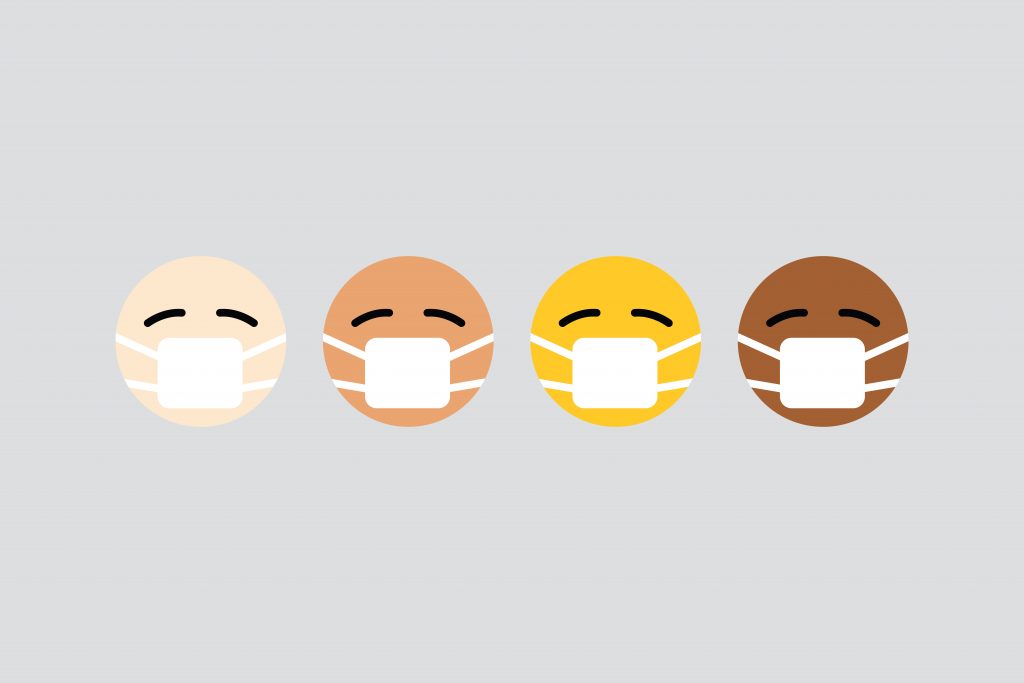
Today, I’m comin’ atcha with something a little different: my experience randomizing into a COVID vaccine trial. I want to share this to remove some of the mystery of the process and, in doing so, hopefully encourage more people to participate, as well as point out some serious shortcomings.
When the NIH Revitalization Act was passed in 1993, one of the expressed priorities was to increase participation of people of color (POC) in clinical trials. In 2016, Black Americans were roughly 13% of the population but only 5% of research participants. Latinx folks comprised over 17% of the US population but less than 7% of research patients. Whites? 2/3 of the population and nearly 83% of research participants. Keeping this in mind, and as a “white-passing” POC, I was curious to see if, in the midst of a global pandemic, considerations were being made for participants of color in a COVID vaccine trial. This is my take.
Despite, or perhaps due to, all the chaos and disorganization of the pandemic, researchers have designed over 1,200 clinical trials to evaluate myriad COVID-19 treatment and prevention strategies. I’m participating in a trial for one vaccine candidate that is now entering a Phase II/III study that will compare the results of the people who receive the investigational vaccine with those who receive a placebo (which is a saline solution).
Some quick facts about this trial:
- Approximately 30,000 healthy people could take part in each phase
- Participants are randomly assigned to receive the investigational vaccine or placebo
- Participants receive two injections in their upper arm (where you get your flu shot), approximately three weeks apart
- Additional follow-up time points are one month, six months, 12 months, and 24 months after the second shot
But what’s it really like?
I randomized into the study in mid-August, so I can share a bit about my experience: what to expect, and where I felt the patient experience fell short.
After answering some questions in a quick phone call, my enrollment appointment was scheduled. The actual appointment lasted approximately three hours. It went a little something like this:
First, I did all the paperwork. Forms to review and sign included:
- Patient Information Sheet: Contains your basic information like name, address, phone number, emergency contact info, known allergies, etc.
- HIPAA Authorization: Here, you agree to let your protected health information be accessed and shared for scientific purposes. There are also details about how they keep your information private and secure.
- Authorization for Use and Disclosure of Protected Health Information: Gives the study permission to use protected health information for specified purposes (in this case, research).
- Confidentiality Statement: Describes how your medical information may be used and disclosed, and how you can get access to it.
I was left in the exam room to review everything on my own and then the research coordinator came in to answer any questions I had and watch me sign. I used to work in research and conducting similar enrollment appointments was one of my responsibilities. During my time in that role, I would be sure to review each document with each participant—reading it aloud and pausing for understanding and answering questions throughout.
Comparing my recent study experience with my history as a researcher, I was a little surprised. I think it might have had something to do with the urgent nature of the race to develop a COVID vaccine. For example, when I asked about whether working on this study was taking priority over other studies at the site, they responded with a resounding yes. In fact, the study coordinator I talked with was brought in from another site to better respond to the onslaught of patients enrolling at the site where I enrolled.
My personal experience makes me curious as to whether study participants with distrust of clinical trials (and medical providers in general) and/or low levels of medical literacy (or literacy in general) were treated similarly and decided not to give their consent to participate in this trial because it seemed too mysterious. Or, was an assumption made about my level of trust and literacy when I walked in, and that’s why I was left alone?
Once my paperwork was done, it was time to see if I was eligible for the study. This includes:
- Answering questions about my health;
- Assessing my current risk for COVID;
- Having the study doctor complete a short physical examination;
- Getting a COVID test with a nasal swab (it’s like a sharp feather and it is not painful but is very uncomfortable); and
- Taking a urine pregnancy test
Once all that was settled, I was in. Then, the study staff took a small blood sample and gave me my shot! Participants are then required to stay for 30 minutes for observation.
I was instructed to download an app that serves as an electronic diary to track my temperature (the study provides the thermometer), symptoms (from a list), and measure any redness or swelling of the injection site (the study provides a device). The app is very easy to use, and I was pleased to learn that if you don’t have a smartphone (or are uncomfortable with apps), the study will provide a device on which to record your diary.
Something that struck me was how difficult it was to measure the redness of the injection site. I had spent some time in the sun on the day after my appointment, and couldn’t tell if I had any redness! I eventually found some lighting that made a little circle of irritation visible, but if my skin had been any darker, I wouldn’t have been able to see it at all.
While my day in the sun covered up any irritation, it exposed a blind spot in the study design: If my skin were darker like many other POC, would I have received different instructions for how to measure redness at the injection site? One hopes so.
Based on my personal experience as a “white-passing” POC with high medical literacy, below are three recommendations to improve the patient experience for people of color:
Use inclusive recruitment strategies
Ensure that the study incorporates inclusive recruitment strategies in communities with a variety of demographic backgrounds. This starts with including advocates from communities of color in the development of the study. Expanding recruitment into these areas may require direct-to-patient recruitment methodologies that seek to identify and recruit patients first, and then match them with a site and/or investigator.
Ensure the informed consent process is accessible to all potential patients, regardless of their level of medical literacy
Design an informed consent process that takes into account different levels of medical literacy and trust. It is critical that patients fully understand what they’re consenting to in the study. This process should be the same for all patients so that there isn’t any variation based on assumptions.
Evaluate data points of interest to ensure they can be accurately captured for a diverse array of patients
Test the feasibility of collecting the data points within a diverse cohort of patients to ensure that they will be useful and accurate for the study (e.g., how skin irritation presents and is measured on a variety of skin tones).
If consideration isn’t given to people who distrust clinical trials specifically or medical providers in general, have different levels of literacy, are not tech savvy, or have darker skin, they may not feel welcome or safe participating in a COVID trial. If patients aren’t made to feel like valued members of the study team, 30% drop out before study completion. The result is a homogenous participant population that does not reflect the population the vaccine is designed to protect.
The good news is that there are a few tangible steps study managers can take to improve the patient experience for POC. Doing so promises to improve safety and efficacy for a broader array of the patient population.





2 Replies to “My COVID Vaccine Trial Experience (so far)”